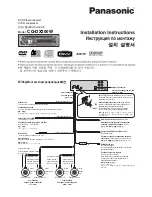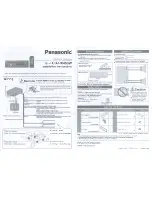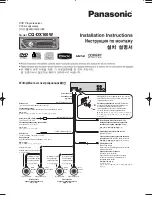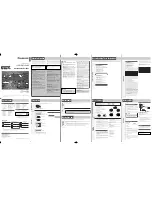
20
www.javad.com
status indicators display each file.
To delete files from your receiver click Delete.
Click
Yes
at the delete files confirmation dialog box.
NetView deletes the selected files.
Managing Receiver Options
Checking an OAF
For a complete list of options and their details, visit
the JAVAD GNSS website.
You can check the status of your receiver’s options,
and load any new OAFs via NetView.
Connect your receiver and computer. See
“Connecting the Receiver and a Computer” on page
28 for this procedure. Start NetView. Establish con-
nection between NetView and receiver.
Click on the receiver name on the left panel. On the
right open Options tab.
• Option name – a name/description of the option
• Current – shows if the option is in force at the
present or not
• Purchased – if the option is purchased or not
• Leased – if the option is leased or not
• Date – the date the leased option will be dis-
abled, if applicable
Loading OAFs
JAVAD GNSS dealers provide customers with OAF
files. For any OAF related questions, E-mail at sup-
[email protected]. Please have your receiver ID num-
ber available.
Connect your receiver and computer. Start NetView.
Establish connection between NetView and receiver.
Click on the receiver name on the left panel. On the
right open Options tab.
To upload a new options file, click on Upload but-
ton, and select the options file. Refresh – Updates the
window
Navigate to the location of the new Option
Authorization File. OAFs have .jpo extension and are
unique to each receiver.
Clearing the NVRAM
The receiver’s Non-Volatile Random Access Memory
(NVRAM) holds data required for satellite tracking,
such as almanac and ephemeris data, and receiver
position. The NVRAM also keeps the current receiv-
er’s settings, such as active antenna input, elevation
masks and recording interval, and information about
the receiver’s internal file system.
Even though clearing the NVRAM is not a common
(nor normally a recommended) operation, there
are times when clearing the NVRAM can eliminate
communication or tracking problems. Clearing the
NVRAM in your receiver can be interpreted as a “soft
boot” in your computer. After clearing the NVRAM,
your receiver will require some time to collect new
ephemerides and almanacs (around 15 minutes).
Clearing the NVRAM of your receiver will not delete
any files already recorded in your DELTA’s memory.
However, it will reset your receiver settings to factory
default values.
In addition, the NVRAM keeps information about
the receiver file system. Note that after clearing the
NVRAM, the receiver’s SAT LED will flash yellow for a
few seconds indicating that the receiver is scanning
and checking the file system.
Using MinPad to Clear NVRAM
Press the power button to turn off the receiver.
Press and hold the FN button.
Press and hold the power button for about 4 to 8
seconds. Release the power button while continuing
to hold the FN button.
Wait until the four LEDs blink yellow.
Release the FN button.
Using NetView to Clear NVRAM
Connect your receiver and computer. Start NetView.
Establish connection between NetView and receiver.
Click on the receiver name on the left panel. On the
right click on Actions4Clear NVRAM.
Confirm NVRAM clearing.
Checking Firmware Version
Use NetView to check the firmware version of your
receiver.
Connect your receiver and computer. Start NetView.
Establish connection between NetView and receiver.
Содержание TRIUMPH-3
Страница 2: ... JAVAD GNSS Inc 2018 www javad com ...
Страница 6: ...6 www javad com ...
Страница 9: ...www javad com 9 UNC 3 8 16 10 5 16 91 2 95 2 64 77 8 4 165 9 181 5 181 8 TRIUMPH 3 ...
Страница 23: ...www javad com 23 ...





































